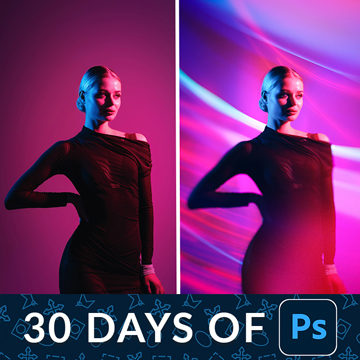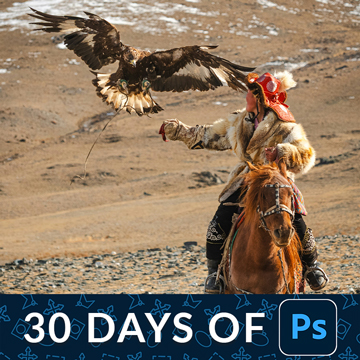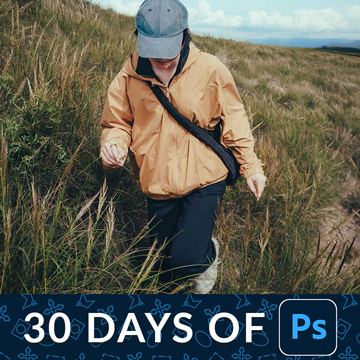Download Assets
description
Learn to save and export your Photoshop files like a pro! On day 3 of 30 Days of Photoshop, we’ll cover essential file formats like PSD, JPG, and PNG. Discover which formats are best for web, print, and social media, and how to preserve your layers for future edits.
Follow along with all 30 episodes as we explore the the magic of Photoshop together!
Watch Next
JOIN 30 DAYS OF PHOTOSHOP (FOR FREE!)
Ready to jump in? Sign up and we’ll email you a printable calendar and daily class schedule so you can get started right away!
Image Source
- Karsten Winegeart
Images sourced from Unsplash.
Share
AFTER
BEFORE
File Formats Explained
Understanding the difference between file formats is the first step towards fully optimizing your images for any use. The key takeaway is to always save a layered file for yourself—your “master copy”—and then export a separate, flattened version for web, print, or social media. This ensures you can always go back and make changes to your original work while providing a final, compressed image for its intended use.
Saving Your Layered File
First, you’ll want to save a layered version of your work. After making your edits, go to File > Save As. For most projects, the Photoshop Document (.psd) format is perfect, as it keeps all your layers, masks, and effects intact. If your file is over 2 GB, Photoshop will automatically prompt you to save it as a Large Document Format (.psb). For projects that need to be compatible with other programs like Illustrator or Acrobat, a Photoshop PDF or TIFF file are great options that can also preserve layers.
Exporting for Web
Once you’re ready to share your image, you’ll need to export a flattened version. The best way to do this is by going to File > Export > Export As…. This opens a dialog box with several options. The most common format for web images is JPEG, which offers a great balance of quality and small file size. For images that need a transparent background, like logos, choose PNG. If you’re creating a simple animation or a very small, low-color graphic, a GIF is the right choice.
Adjusting Export Settings
In the Export As dialog, you can adjust various settings to optimize your image. For JPEGs, you can control the Quality slider to reduce the file size; a lower quality means a smaller file. You can also change the width and height to resize the image.
For web use, it’s a good practice to convert the color space to sRGB to ensure colors appear correctly across different devices. A handy feature is the ability to export at multiple sizes at once by clicking the plus icon, which is perfect for generating different versions for social media or your website.
Now you know how to save and export your work properly in Photoshop. Join us tomorrow for Day 4 of 30 Days of Photoshop, where we’ll dive deeper into the importance of layers and non-destructive editing.












